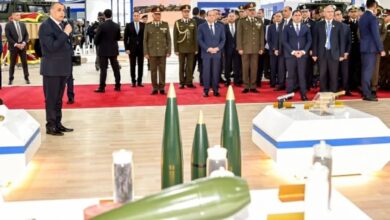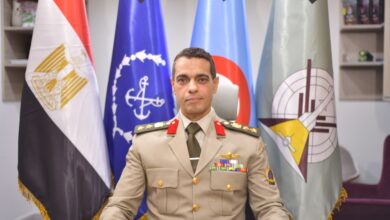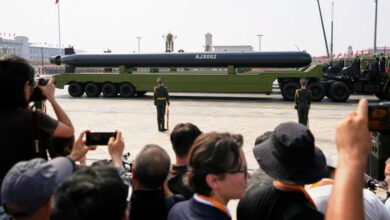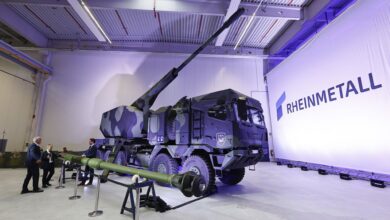Following 9 October’s deadly violence near the state television building, also known as Maspero, the state-owned media has only presented a formal government narrative that holds protesters responsible for events that left 26 dead.
This is the biggest death toll of a single protest since 11 February, the date of the ouster of former President Hosni Mubarak.
What stood behind these deaths is still subject to a war of narratives, one perpetrated by the powerful Supreme Council of the Armed Forces (SCAF), which runs the country, and the other by activists who witnessed the clashes with their bare eyes as they partook in the march that ended up in a bloody scene at Maspero.
The causes of the deaths, according to initial hospital reports, were live ammunition and being run over by a vehicle. However, the SCAF denied in a press conference on 12 October that the army used live ammunition against protesters. The army also didn’t confirm whether armored personnel carriers (APC) ran over protesters. It implied, however, that if this happened, it was definitely unintentional.
In its press conference, the SCAF showed a timeline of the events. It said that near 4 pm, around 1600 protesters gathered in Shubra, where a Coptic march was set to take off from. The gatherers were full of hatred for the army, according to the generals. After two hours the number of protesters increased significantly as they reached the Maspero building. The SCAF continued by saying that there were protesters carrying knives and Molotov cocktails. Minutes later they started throwing stones at the army, which responded by firing in the air, the generals finished.
A blog has been created to collect eyewitnesses’ testimonies over what happened on Sunday. The site is run by activists and independently aggregates the testimonies of those who witnessed the events firsthand.
Testimonies from various people all say mainly the same thing: the military's narrative is false. The protest started peacefully in Shubra, according to at least 12 eyewitnesses who were there from the beginning, but the march was attacked by unidentified people before reaching the Maspero building, a detail which the army failed to mention. As soon as protesters came close to the area surrounding Maspero, the army started firing bullets into the air. Minutes later APCs abruptly crossed into the crowds and started frantically running over people.
According to Bishoy Saad, “People were marching peacefully from Shubra. There were some verbal clashes but the march continued.” He said that a priest thanked Muslims who joined the march and that the most significant incident before reaching Maspero was that “protesters received a wave of stones. This led to light injuries.”
Saad also said that in the working class area of Qollaly on the way to Maspero, “we heard bullets. People started running but a clergy man managed to calm them.”
The violence ahead of the march reaching Maspero was also recounted by Steve Nabil Helmy. “As soon as we marched toward the tunnel of Shubra, there were people throwing stones at us,” he wrote.
There is a level of consistency across the testimonies in their descriptions of how the violence developed.
Mohamed Abu Rehab said that protesters at the beginning were marching peacefully and didn’t engage in violence until the army attacked them. Similarly, Lobna Darwish tweeted that army started firing bullets at a march full of children. Saad wrote, “As soon as we walked toward the corniche, we heard heavy bullets and people started to run. Lights were turned off.”
“As soon as bullets started being fired, army vehicles came in to run over the protesters. APCs went back and forth in a move to crush protesters,” Abu Rehab said.
Rabie Fahmy, a passerby who was there at the time when the bullets were first being fired, said, “After the army started firing bullets in the air to frighten the protesters, they opened the way for two vehicles to run toward the protesters.”
“It was a nightmare that reminded me of 28 January,” wrote Shaima Yehia, who described the APCs as driving toward protesters in an unpredictable manner.
Saad added details to the accounts of APCs running over protesters. “I saw an army vehicle that ran in a mad manner and a soldier on the top of the vehicle firing in every direction. The vehicle was running over people. A few minutes later, another two vehicles were running over people back and forth.”
Throughout his testimony, Helmy describes the point at which protesters resorted to violence to defend themselves. “I saw two vehicles frantically driving toward us. One of them smashed two people. People cordoned it off and set fire to it while throwing stones.“
People then called for the soldier inside the vehicle to get out and not be afraid. The soldier came out and was badly beaten, according to Helmy, who added, “We then found another vehicle that smashed at least 15 people.”
Fahmy added one detail no others recalled, which was that a protester took an automatic rifle from one of the soldiers. “I don’t think that he could fire a single bullet from it,” he said.




